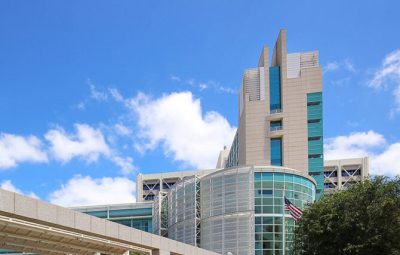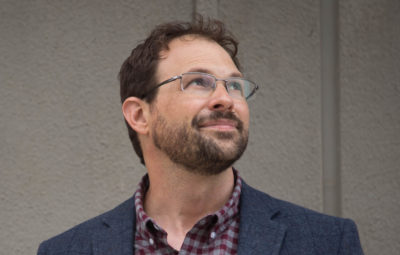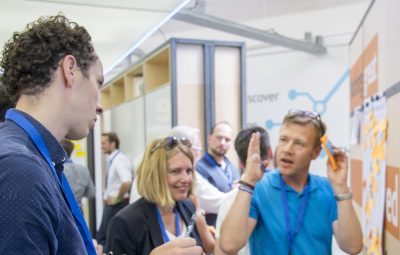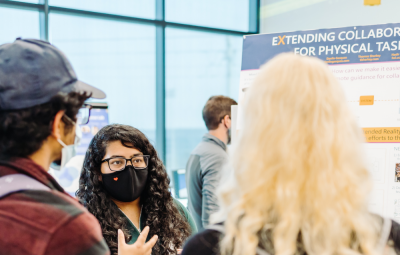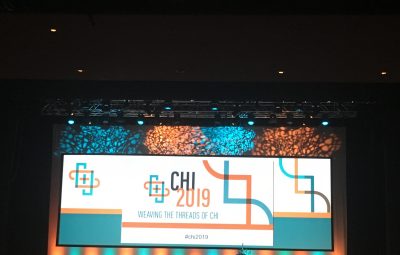In November of 2021, the UC San Diego Design Lab unveiled their long-awaited new home in the recently constructed Design and Innovation Building, or as it is affectionately referred to, the DIB. The DIB will serve as a hub for academia, industry and community innovators to participate in design events, lectures, and other working partnerships within the design community that aim to create human-centered solutions to the complex problems facing our region and beyond. The grand opening of the DIB showcased the potential for such gatherings, boasting the presence of organizations like the UCSD Design Co., Girls Who Code, and the Institute of Electrical and Electronics Engineers, to name a few. Such groups showcased current and past projects to the students, professors, and industry leaders in attendance.

The opening of the DIB marks a momentous occasion in the history of the Design Lab, as the building itself, which is a multi-use environment bringing together multiple disciplines under one roof, represents the journey and philosophy at the heart of the Design Lab’s mission–making UC San Diego a world center for design research and education that fosters a new way of thinking, which addresses the core issues with a systems point of view, and emphasizing the role of people in the complex systems of the modern world.
“The opening of the Design and Innovation Building represents a dream that started before my time here at the Design Lab over eight years ago,” says Emily Knapp, Industry Strategist at the Design Lab. “The work of my team is about community engagement and collaborative work. We try to bring all of the strongest resources of the university out into the world, breaking that ivory tower reputation that we have. Bringing all of the theory of design and all of the incredible things our researchers and students are working on out into the real world.”
Also noting the immense importance of the new DIB were the technologists, engineers, bio-scientists, social scientists, architects, and students that make up the collective of Design Lab members, some of which showcased their work at the event. One of these displays was presented by Pinar Yoldas, associate professor for UCSD’s Visual Arts department, who turned her focus on genetically modified algae as a renewable material into an art display. The display was complete with towering buildings and water to illustrate new applications that can bring organic design knowledge into building structures that also function as algae farms, while also showcasing innovations in biodegradable plastics that can be used as temporary functional architecture.

“I am very lucky to be present in this building because this is a nexus of high functioning minds,” says Yoldas. “We can think of it as an information highway and it’s a brilliant community of people who work on a huge spectrum of subjects, and I think there’s a lot of value to that because you can walk into the neighboring lab and they’ll be working on a prototype and you can have a five minute conversation about what they’re doing and that can inform your next step,” she explains.
In addition to the potential benefits for knowledge sharing, many Design Lab members look forward to making and maintaining connections in the new physical space, after having spent the past couple of years having to work remotely due the pandemic.
“Having a shared space definitely means having a deeper sense of community, better collaboration and communication, and overall friendships,” said Grace Zheng, a Cognitive Science major at UCSD and Project Manager for Diabetes Design Initiative.
While the grand opening of the DIB does mark a historic moment for the Design Lab’s history, its newly found presence serves a greater purpose. The world of academia has a reputation for feeling alien to a non-academic audience outside of the university setting. Advanced research described by professors, researchers, and students can be like that of science fiction, and although we are not in a science fiction novel, the sentiment remains: unless one is in academia, it can be difficult to access the information and keep up with what researching institutions like the Design Lab are doing. However, with the new Design and Innovation Building, that will no longer be the case.
One important aim of the Design Lab is to make the world of academia more accessible to the larger community by not only providing an interdisciplinary environment under one roof, but also integrating public transit for direct access for anyone interested to come in and have a conversation. The Design Lab plans to serve as UC San Diego’s front door to the community by utilizing the MTS Blue Line Trolley, which stops at the doorstep of the DIB on the UCSD campus, and at the Design Lab’s expanded work spaces at “Park & Market,” located in the heart of Downtown San Diego on Park Avenue and Market Street in the East Village. Here, the Design Lab can engage in innovative ideas and dynamic partnerships with entities across the spectrum of industry, civic, education and arts to collaborate on projects that provide solutions to the difficult social, environmental and complex problems our region faces.

In a Zoom meeting for the UCSD Retirement Association, Mary Lindenstein Walshok, former UCSD faculty and co-founder of the San Diego nonprofit CONNECT, described the facility as a “platform […] on which multiple small units of activity can be located and leverage one another’s assets.” According to the CONNECT website, the building would serve as a “location for special events including large conferences, meetings, awards, presentations and weddings.” From the same Zoom meeting, one of the noted expectations for the building includes encouraging civic engagement by acting as a “beacon for all San Diegans.” Then, given the building’s construction near a Blue Line Trolley station, the expectation is for visitors of this building, who are interested in discovering more of what UCSD has to offer, to then make their way to the DIB to delve deeper. Hence, similar to the Silk Road, an ancient trading route that was host to the transfusion of ideas, the trolley will serve as the path to wells of knowledge.
The construction of the DIB and the Park & Market buildings, combined with the use of the trolley to connect the two, enhances the goals of the Design Lab and its members: to provide impactful design solutions to the region’s problems for better human experiences.

